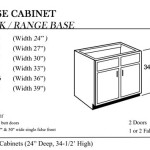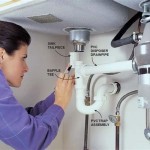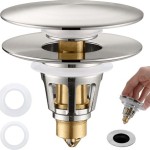Over-The-Sink Kitchen Organizers: Maximizing Space and Efficiency
The kitchen, often considered the heart of the home, is a space prone to clutter. Limited countertop space and the need for accessible dishwashing essentials frequently contribute to disorganization. Over-the-sink kitchen organizers present a practical solution to these problems, providing additional storage and streamlining essential kitchen tasks. These organizers, designed to sit above the sink, offer a range of benefits, from drying dishes to storing cleaning supplies, thereby enhancing overall kitchen efficiency.
The design of over-the-sink organizers typically incorporates a sturdy framework, usually constructed from stainless steel or coated metal, to ensure durability and resistance to moisture. They are often adjustable in length to accommodate different sink sizes, further increasing their versatility. The primary function is to provide a raised platform for drying dishes, but many models include additional features such as utensil holders, knife blocks, cutting board racks, and special compartments for sponges and dish soap. This multi-functionality allows for consolidating essential kitchen items in a single, easily accessible location.
The selection of an appropriate over-the-sink organizer requires careful consideration of several factors, including sink dimensions, material quality, weight capacity, and the specific storage needs of the user. A poorly chosen organizer may not fit correctly, lack the necessary features, or be unable to support the weight of the items stored on it. Therefore, a thorough assessment of available options is crucial to ensure that the chosen organizer effectively addresses the user's needs and enhances kitchen functionality.
Understanding the Benefits of Over-the-Sink Organizers
The advantages of using an over-the-sink organizer are multifaceted and contribute significantly to improved kitchen management. The primary benefit lies in the efficient utilization of otherwise unused space above the sink. This allows for a more decluttered countertop, freeing up valuable workspace for food preparation and other kitchen tasks.
Furthermore, over-the-sink organizers promote better hygiene in the kitchen. By elevating dishes and utensils off the countertop, they encourage faster drying and reduce the risk of bacteria growth. The open design allows for adequate air circulation, preventing moisture buildup and promoting a cleaner environment. Models with removable drip trays facilitate easy cleaning and further enhance hygiene.
The accessibility of frequently used items is another significant advantage. Having dish soap, sponges, utensils, and drying dishes within easy reach streamlines the dishwashing process and reduces the time spent searching for essential items. This improved accessibility enhances the overall convenience and efficiency of kitchen tasks.
Key Features to Consider When Choosing an Organizer
Selecting the right over-the-sink organizer involves evaluating various features to ensure it meets specific needs and preferences. Material quality is a crucial factor, as the organizer will be exposed to moisture and frequent use. Stainless steel is a popular choice due to its durability, resistance to rust, and ease of cleaning. However, coated metals can also provide adequate protection against corrosion if properly maintained.
The adjustability of the organizer is essential to ensure a proper fit over the sink. Measure the dimensions of the sink before making a purchase and look for organizers that offer adjustable length and height to accommodate the specific measurements. This will prevent the organizer from being unstable or obstructing access to the sink.
Consider the storage capacity and the types of compartments offered by the organizer. Determine the specific items that need to be stored on the organizer, such as dishes, utensils, knives, cutting boards, and cleaning supplies. Choose a model with the appropriate number and types of compartments to accommodate these items efficiently. Some organizers may include specialized features like wine glass holders or designated slots for pot lids.
The weight capacity of the organizer is also an important consideration. Ensure that the organizer can safely support the weight of the items that will be stored on it, especially when fully loaded with wet dishes. Overloading the organizer can lead to instability and potential damage.
Finally, consider the ease of cleaning and maintenance. Look for organizers with removable parts, such as drip trays and utensil holders, that can be easily cleaned. Choose materials that are resistant to staining and can be wiped down with a damp cloth.
Optimal Placement and Maintenance for Longevity
Proper placement of the over-the-sink organizer is crucial for maximizing its benefits and ensuring its stability. The organizer should be positioned evenly over the sink, with the supporting feet firmly planted on the countertop. Ensure that the organizer does not obstruct access to the faucet or the sink basin.
Regular cleaning and maintenance are essential for preserving the organizer's appearance and preventing the buildup of bacteria and mold. Wipe down the organizer regularly with a damp cloth and mild detergent to remove food particles and water stains. Pay particular attention to the drip trays, which can accumulate water and residue. Empty and clean the drip trays frequently to prevent the growth of mold and bacteria.
Avoid overloading the organizer with excessive weight, as this can compromise its stability and potentially lead to damage. Distribute the weight evenly across the organizer to prevent it from tipping or collapsing. If the organizer includes adjustable components, periodically check and tighten them to ensure they are securely in place.
For stainless steel organizers, consider using a stainless steel cleaner to maintain their shine and prevent rust. Avoid using abrasive cleaners or scouring pads, as these can scratch the surface. For coated metal organizers, follow the manufacturer's instructions for cleaning and maintenance to prevent damage to the coating.
Inspect the organizer regularly for signs of wear and tear, such as cracks, rust, or loose components. Address any issues promptly to prevent further damage and ensure the organizer's continued functionality. Replacing damaged parts or components can extend the life of the organizer and maintain its effectiveness.
By following these guidelines for placement and maintenance, users can ensure that their over-the-sink kitchen organizer remains a valuable and functional addition to their kitchen for years to come. The organizer can promote a more organized, hygienic, and efficient kitchen environment with proper care.

Sink Shelf Wood Kitchen Organizer Over Farmhouse Space Saver Countertop Mother S Day Etsy

Over The Sink Dish Drying Rack Adjustable 2 Tier Stainless Steel Drainer Large For Kitchen Counter

Kitchen Details Over The Sink Drying Rack With Utensil Holder 10071 Grey Home

Over The Sink Dish Drying Rack Shelf Stainless Steel Kitchen Cutlery Holder 65cm

Rust Resistant Sink Dish Drying Rack Kitchen Over Storage Organ

Over The Sink Expandable 16 14 To 20 87 Caddy Organizer Kitchen And Rack Made In China Com
Hexar Reg Heavy Duty Over The Sink Dish Drying Stand 3 Tier Large Rack Counter For Kitchen Shelf With Door Organizer Dust Proof Cabinet

Sink Organizers Kitchen Organizing S

Lexi Home Extra Large Steel Black Powder Coated Over The Sink Dish Dry

Sorbus Over The Sink Dish Drying Display Rack Stand Draining Organizer With Utensil Holder Hooks For Kitchen Counter Storage Dishes Utensils Etc Silver







